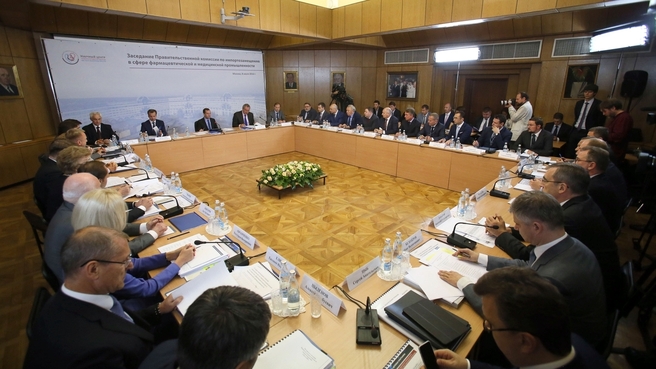On the agenda: implementation of import substitution projects in the pharmaceutical and medical industries.
Excerpt from Dmitry Medvedev’s opening remarks
The main point of producing medicines under the import substitution programme is not just so they are Russian-made – they must be effective, safe, high quality and, of course, affordable.
We’ve learned to produce equipment, including sophisticated machinery, but are still buying expendable materials abroad on a large scale.
We must develop our own production and support localisation of foreign production at home. We have import substitution plans on producing both pharmaceuticals and medical equipment. They supplement the measures that we included before in our federal targeted programme on developing the pharmaceutical and medical industries.
Russian pharmaceutical companies received loans for a total of about three billion roubles, and producers of medical supplies about two billion roubles.
In the last four years we signed contracts on developing technology for the production of 132 medicines from the list of vital and essential ones. Already 126 have been developed and the terms of their state registration and market entry have been set.
We are implementing 208 projects under the import substitution plan in the medical industry, out of which more than half are already completed. We allocated 15 billion roubles from the budget for these purposes under the government programme. However, support of both the pharmaceutical and medical industries should not be limited to money. Medicines and medical goods produced in the Eurasian Economic Union should enjoy priority in government purchases.
The domestic production of medical goods has increased almost by 10 percent over 2014. The production of Russian medicines has also gone up – by about 2.5 times in monetary terms over the past five or six years. Thirty seven new medicines have entered the market. The pharmaceutical industry registered substantial growth last year – about 24 percent. This is the highest industrial growth rate during the economic crisis. That said, the share of Russian-made products among vital and essential medicines is still just a bit over 70 percent.
The goal is to bring this figure to 90 percent by 2018 and it is absolutely feasible.








